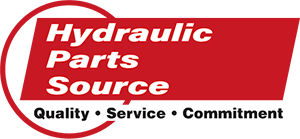Change Filter Elements to Avoid a Hydraulic System Nightmare
Many hydraulic system failures are a direct result of system contamination, and many are also preventable. As it is with most things, an ounce of prevention is worth a pound of cure.
In this article we talk about the importance of prevention by using filtration and how changing filter elements regularly helps to avoid contamination-related system failure.
Why is Filtration Important?
The costs of resolving hydraulic system failure include:- Labor costs
- Production downtime
- Replacing pricey components
- Providing new hydraulic fluid for the system
While the importance of filtration in avoiding contamination seems obvious, it is extremely common for companies to neglect upkeep and forget to change filter elements frequently.
Contamination & Pressure Drops
Hydraulic fluid captures contaminants as it flows through the filter element, which increases the pressure drop across the filter assembly.If your system isn’t monitored, the pressure drop will continue to increase until one of the following happens:
Situation #1
In cases where the hydraulic system has a bypass valve, the filter clogs with contaminants and the fluid can no longer pass through the filter freely.At this point, the fluid will bypass the filter once the pressure drop has reached a critical point. This means that the hydraulic fluid continues to run and any new contaminants circulate through it. In this case, the hydraulic system no longer filters the fluid.
Situation #2
When a filter assembly is not equipped with a bypass valve, the pressure differential across the filter will increase until the filter element fails and all contaminants flow into the hydraulic system. This has similar disastrous results to when a bypass kicks in and allows dirty hydraulic fluid to flow through the system.An Ounce of Prevention
The best way to avoid either of these poor outcomes is to be proactive and change the filter element before the situation becomes critical.The best plan is to change elements according to a preventative maintenance schedule and based on the filter element’s condition.
The Value of a Preventative Maintenance Schedule
A preventative maintenance (PM) schedule is exactly what it sounds like. You determine an amount of time to allow the machines to run, and check/replace elements at the end of that period.During PM, check whether elements are loaded with contaminants or not. Depending on the results of your check, decide if they need to be changed.
In the best-case scenario, you’ll discover the elements have a lot of life left. In this situation, we recommend not to replace them, reducing unnecessary filter changes and costs.
Other times, you’ll discover that elements are totally loaded and have forced the filter assembly into bypass or, in systems without a bypass, filter failure. Luckily, you’ll be able to replace elements before complete system failure.
How to Gauge Filter Element Condition
There are devices called Clogging Indicators that detect and alert you of filter condition. These indicators measure the pressure drop across the element and tell you when it is time for a replacement. This is useful because it lets you know when the filter needs changing and removes the guesswork.These devices help reduce disasters by detecting a filter element that needs replacing ahead of schedule, and by indicating when the element can be left in a bit longer. Indicators need to be monitored under normal operating conditions. These indicators can give false readings if the oil is cold at start-up.
Many filter assemblies are available with element condition indicators, which makes timing element changes easy.

